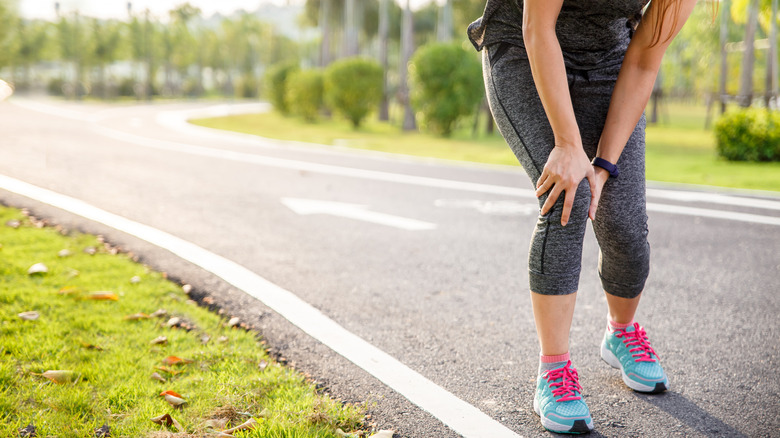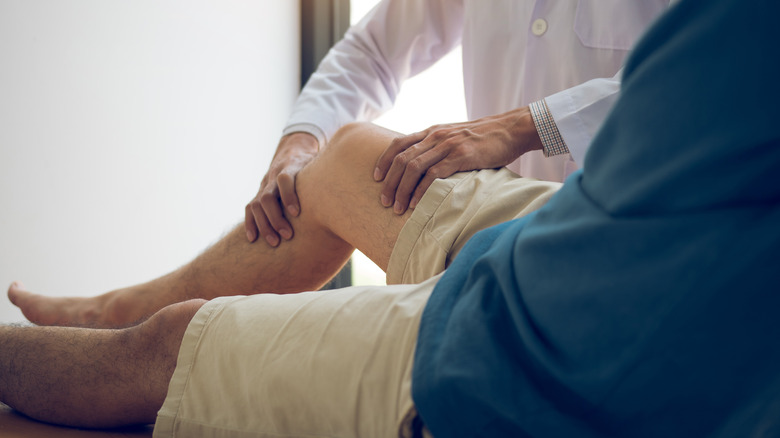What Is Runner's Knee And How Can You Treat It?
Runner's knee, also called patellofemoral pain syndrome, causes a dull pain around the front of the knee. According to Johns Hopkins Medicine, your knee will be tender to touch and painful around or in the kneecap. The pain usually worsens after you've been active or have had your knees bent. Your knee might also make clicking or rubbing sounds.
According to Runner's World, runner's knee is often caused by weakness in the gluteus medius muscles on the outside of the hips, which leads the bones and muscles in the leg to become misaligned. You can treat and prevent runner's knee by strengthening these muscles. WebMD reports that other potential causes of runner's knee include overuse, repetitive bending of your knee, an injury, or problems with your feet such as flat feet, hypermobile feet, or overpronation.
If you have any of these symptoms, see your primary care physician or an orthopedic specialist to get a proper diagnosis. Diagnostic methods might include an X-ray, MRI, or other tests, and once they have a better idea of what's causing your runner's knee, your doctor can formulate a treatment plan. First and foremost, you will likely need to rest and recover. The American Academy of Orthopaedic Surgeons recommends using the RICE method — rest, ice, compression, and elevation. Taking ibuprofen or naproxen can also reduce swelling and pain while healing.
How to treat and prevent runner's knee
However, there's no need to nix exercise completely while your knee is healing. Swimming or riding a stationary bike are low-impact alternatives that don't put as much stress on your knees (via OrthoInfo). After a healing period, you can also begin strengthening your gluteus medius muscles to help prevent runners knee in the future. Runner's World recommends three sets of 15 on each leg of these exercises: fire hydrants, straight leg raises, clamshells, and donkey kicks.
For fire hydrants, get down on all fours with your hands and knees on the floor. Extend one leg out to the side while still bent at the knee, then lower to the ground and repeat. Donkey kicks start in the same position. For these, keep your leg bent while you push it back and up until the bottom of your foot is facing the ceiling, then lower back down.
To do clamshells, lie on your side and prop your upper body on your forearm with your shoulder over your elbow. With your knees bent and feet together, raise up one knee and then lower. Finally, roll to your back for straight leg raises. Place your hands under your pelvis with your legs straight out. Raise one leg toward the ceiling, being sure to keep it straight, then lower. And as always, be sure to consult your medical team if pain or other symptoms persist.


